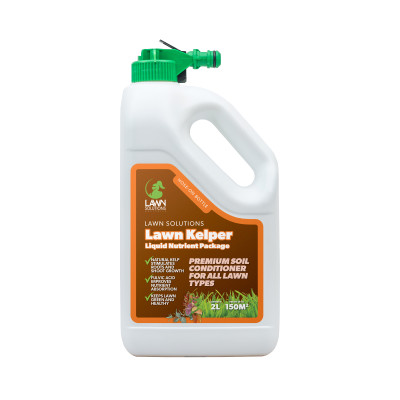What are Mushrooms?
All mushrooms are fungi, but not all fungi are mushrooms. Mushrooms are the fruit of a fungus and appear above ground when the conditions are at their optimum. This is usually when conditions are warm and humid, or cool and damp. Mushrooms will have a cap and a spore bearing surface (gills) that it will use to disperse spores and spread.
Why are there Mushrooms in my lawn?
Many fungal diseases thrive in warm, humid conditions, others set in during cool, damp conditions. The reason they have appeared is because the environmental conditions are at their optimum for the fungi to fruit.
Mushrooms are a great sign that you have lots of organic material in your soil, which is good news for your lawn. Mushrooms will help to break down organic material and help your soil to be more nutrient rich and productive.
How to prevent Mushrooms from appearing in your lawn
Mushrooms themselves do not do any damage to your lawn, so they are nothing to seriously worry about. But if you don’t like their appearance and would prefer them gone, you can easily remove them by hand. Usually in a short amount of time, the favourable growing conditions for mushrooms will have changed and they will naturally disappear on their own.
If you have continued issues with mushrooms, you may need to reduce surrounding humidity and improve your lawns drainage, which will reduce the ability for fungus to grow. It is important that you do not water your grass in the evening, by doing so only in the morning or day time, you will allow the moisture to dissipate and absorb.
Additional shade will also improve conditions for mushrooms, so make sure you trim back your trees regularly. This will also naturally help more sunlight to your grass which will improve its ability to create food and oxygen.
If your lawn is compacted, water will be unable to drain away or be absorbed properly, which will also encourage mushrooms. Giving your lawn an aerate will improve drainage and allow oxygen and nutrients to penetrate to the roots of your lawn.
Other Fungi’s
Fairy Ring
This fungal disease is particularly important to be aware of if you have mushrooms appearing in your lawn. Fairy rings appear as large round patches of discoloured turf, with the perimeter of the patch usually being bright green with a ring of mushrooms around it. The method of treating Fairy Rings is much the same as mushrooms, as there are no specific treatments readily available. (There are fungicides that can treat Fairy Ring, but they are generally limited to commercial applications only.) A well-maintained lawn will rarely see Fairy Ring appear, so regular fertilising, mowing, thatch reduction and aerating will usually ensure it doesn’t occur.

Powdery Mildew
A fungal disease, where the leaves of your turf become covered in a white powder. This white powder is Mycelium threads being produced by the fungus. The first symptoms are usually light spots on the blades of your grass, but these generally go unnoticed before the powdery mildew appears.
Control: Treat with Mancozeb fungicide.

Brown Patch
A fungal disease found in warm, wet conditions which produces brown, circular patches ranging in size from very small up to a few metres in diameter. The patches are sometimes surrounded by a grey, smoky outer ring, or sometimes there is just an outer ring surrounded by green grass in the middle. This ring is caused by mycelium fungus. Leaf blades have thin brown edges and yellow spots and lesions.
Control: Avoid evening watering. Remove thatch and use moderate amounts of a balanced fertiliser. Treat with Mancozeb fungicide.



